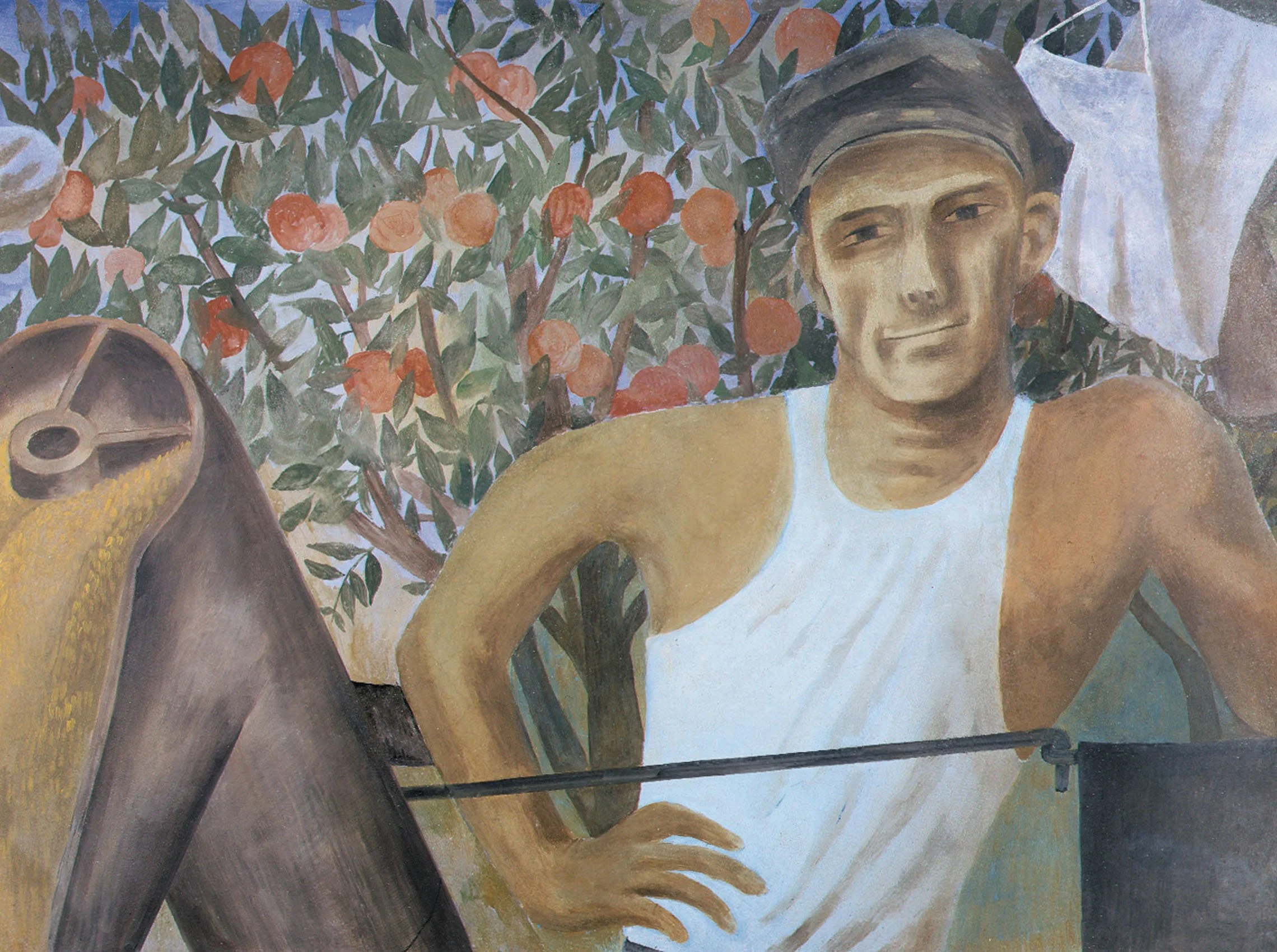BEN SHAHN (1898-1969)
Available Work | Biography
Biography • Ben Shahn (1898-1969)
Ben Shahn, born in Kovno, Lithuania, was the son of a woodcarver. He immigrated with his family to Brooklyn, New York in 1906 after his father escaped from Siberia. In 1911 he began an apprenticeship as a lithographer. Shahn worked his way up to master lithographer and was able to earn enough money to study the fine arts by 1919, when he entered the National Academy of Design where he studied until 1922. At the same time Shahn attended classes at the Art Students League. He later traveled to Paris to study at the Académie de la Grande Chaumière in 1925. In 1927 Shahn was once again in Paris, staying until 1929, when he returned to the United States to paint American social conditions. During this time he lived on Willow Street, Brooklyn Heights and summered in Truro, Massachusetts. In New York City Shahn shared a studio on Bethune Street with photographer Walker Evans.
Using his skills as a master lithographer, Ben Shahn created many posters for union commissions during the late Thirties and Forties. These posters show the full power of Shahn's graphic works with their personal fonts, rough imagery and Shahn's unmistakable use of the workers' hands. Shahn also created posters for the Office of War Information and served as director of the Graphic Arts Section of the Congress of Industrial Organization from 1945 to 1946.
As a painter, Shahn became immensely popular with both the critics and the public in the Thirties for his narrative realism, which appealed to America's social consciousness. His popularity led to many mural commissions through the WPA, including the Central Park Casino, the Bronx Central Annex Post Office and the Jamaica, New York Post Office. Shahn's mural experience began in 1933 when Diego Rivera made Shahn his assistant for the murals he was executing in Rockefeller Center. In 1934 Shahn became one of 3,749 artists employed in the Federal Government's artist aid program, Public Works of Art Project. From 1940-1942 Shahn executed a multi-paneled mural, The Meaning of Social Security, for the main corridor of the new Federal Security Buildings (now the Voice of America Building) in Washington, D.C. The themes for the panels were taken from President Roosevelt's address to Congress concerning "The Meaning of Social Security." Our Harvesting Wheat study was executed in preparation for one of the panels in the commissioned mural and prepared in the traditional fresco manner. The message of Harvesting Wheat is the return of America's bounty through the New Deal. It is executed in Shahn's simplified mature style. The finished Meaning of Social Security mural was painted in egg tempera on plaster. The Meaning of Social Security mural commission was Shahn's final mural of the WPA period.
Ben Shahn's first solo exhibition was at the Downtown Gallery in 1930; they continued as his dealer until his death in 1969. In the early Thirties, he also exhibited at the Salons of America until 1933. The Whitney Museum of American Art invited Ben Shahn to submit paintings to its biennials from 1932 until 1967. Shahn first participated at the annual exhibitions of the Pennsylvania Academy of the Fine Arts in 1940 and continued through 1964, receiving the gold medal in 1956. At the Corcoran Gallery's biennials between 1941 and 1963 Shahn exhibited eight times. He represented the United States at the Venice Biennial in 1954 with Willem de Kooning. Major retrospectives of Shahn's career were held at the Museum of Modern Art from September 1947 to January 1948 and at the Fogg Museum of Art in 1956.
Ben Shahn's work was included in international circulating exhibitions of the Museum of Modern Art in 1961 through 1963. Upon his death in 1969, major retrospectives were held at the Museum of Modern Art and at the New Jersey State Museum. Shahn's estate was represented by the Kennedy Galleries, New York. His work is in many public collections, including the Art Institute of Chicago, Chicago, IL; the Brooklyn Museum, Brooklyn, NY; the Carnegie Institute, Pittsburgh, PA; the Metropolitan Museum of Art, New York, NY; the Museum of Modern Art, New York, NY; and the Whitney Museum of American Art, New York, NY.

